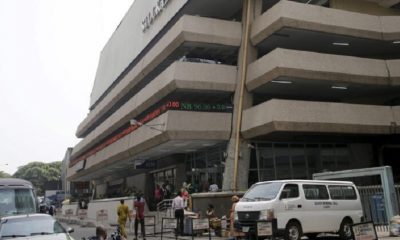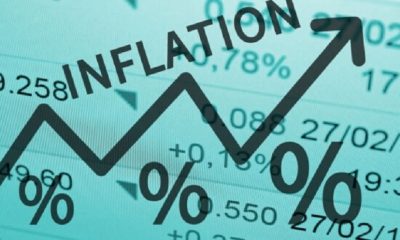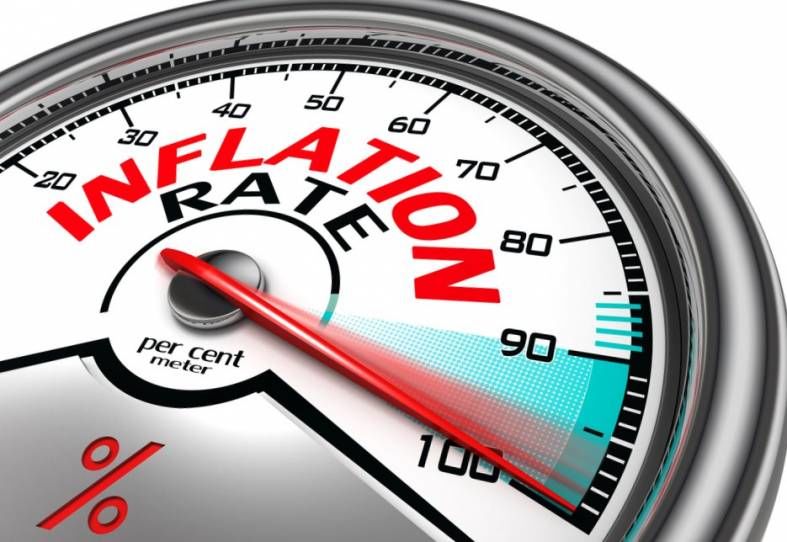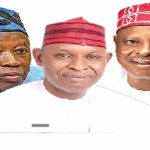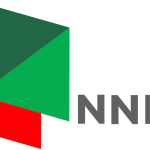Feature/OPED
NBS and Scorecard of Eclipsing Administration
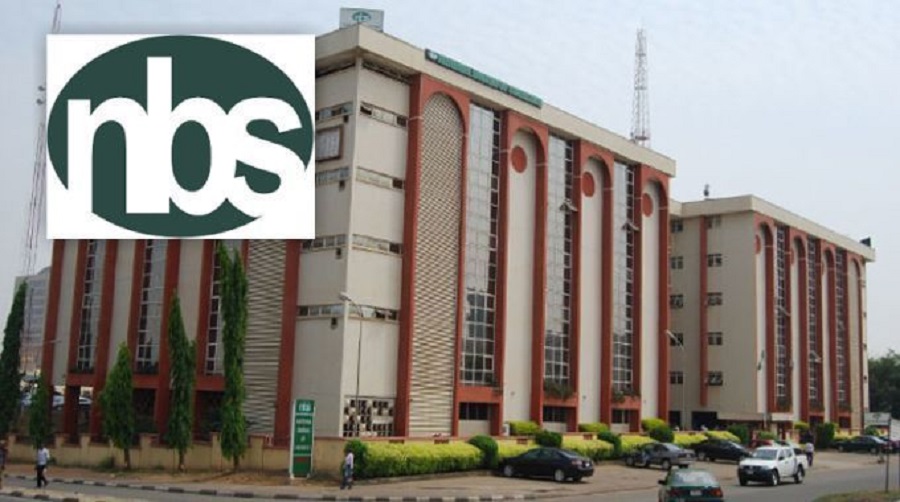
By Jerome-Mario Chijioke Utomi
With a few days to the May 29 inauguration of the new administration in the country, it is glaringly evident that President Muhammadu Buhari-led Federal Government of Nigeria has successfully completed its constitutional two terms of eight years. Though there exists no codified, metered or iron-cast way of assessing the administration’s performance, it is, however, assumed that an administration that spanned eight years must have milestone(s) of achievement to point at.
Indeed, while there are flicker and recognizable flashes of achievements in some sectors of the nation, interim particulars, in my view, suggest that infrastructural provision is the administration’s greatest accomplishment.
The crucial point, then, is how does one define what constitutes infrastructural success and how was it achieved? What are/were the opportunity cost of the purported success?
In February 2021, President Buhari reportedly established the Infrastructure Corporation of Nigeria (InfraCorp), with an initial seed capital of N1 trillion, provided by the Central Bank of Nigeria (CBN), the Nigerian Sovereign Investment Authority (NSIA) and the Africa Finance Corporation (AFC). InfraCorp was also expected to mobilize an additional N14 trillion of debt capital.
Through InfraCorp, Buhari catalysed and accelerated investment into Nigeria’s infrastructure sector via originating, structuring, executing and managing end-to-end bankable projects in the country,
Today, the administration has to its credit 56km Lagos-Ibadan Standard Gauge Rail completed and commissioned within a Nigerian-record-time of 4 years (2017 to 2021); 186km Abuja-Kaduna Standard Gauge Rail Line completed and commissioned in 2016; 327km Itakpe-Warri Standard Gauge Rail completed and commissioned in 2020, 33 years after construction began.
Also, the administration, going by media reports, invested over a billion dollars in three flagship projects: Lagos-Ibadan Expressway (for completion in May 2023), Second Niger Bridge (for completion in May 2023), Abuja-Kaduna-Zaria-Kano Expressway (two of three sections for completion in May 2023), among others.
Even when this piece holds the opinion that the administration demonstrated an understanding of the pivotal role infrastructural provision plays in providing society with the services that underpin the ability of people to be economically productive, it will, on the other hand, objectively qualify the aforementioned achievements as sparse and insufficient, particularly when juxtaposed with a catalogue of adequately unattended sectors (education, security, Power, Niger Delta region labour and employment etc.).
In fact, each time I reflect on President Buhari’s eight-year administration, the fears expressed by a friend in 2015 about the present administration come flooding.
Adding context to the discourse, my friend, amidst euphoria triggered by the declaration of the 2015 presidential election result, cautioned me with these few words; “men will change their ruler expecting to fair better; this expectation induces them to take up arm against him, but they only deceive themselves, and they learn from experience that they have made matters worse.”
Still, in that milieu, I had reminded him that the result ushered in a season of integrity in the country, and he again replied thus; “no single attribute could be identified as a virtue. Remember,” adding that, “Politics has its own rules.”
Eight years after that conversation, I cannot categorically say that my friend was right or wrong in his prediction. But the present instinct in the country explains two things; first, apart from the fact that the shout of integrity which hitherto rend the nation’s political space has as the light faded, jeer has since overtaken the cheers of political performance while fears have displaced reason -resulting in an entirely separate set of consequences – irrational hatred and division.
The reason for this spiralling feeling is understandable!
Take, as an illustration, in 2020 alone; there were outright abridgements of the masses’ welfare by the federal government via the increase of Value Added Tax (VAT) from 5 per cent to 7.5 per cent, re-introduction of Stamp Duty Charge, re-introduction of Stamp Duty on house rents and C of O transactions, electricity and petrol price hikes crisis among others. These were inextricably linked both in their causes and solutions.
Each of these challenges has its roots in the administration’s payment of little attention or lip service to expert warnings about the poor state of the economy, and further fed by the federal government’s persistent formulation of policies with no clear definition of the problem, the goals to be achieved, or the means chose to address the problems and to achieve the goals; adoption of coquettish tactics that make the masses fall in love with excitement while they (leaders) remain inwardly detached; keeping them in control.
There are very recent examples.
According to a recent report by the National Bureau of Statistics (NBS), it stated that in April 2023, the headline inflation rate rose to 22.22% relative to March 2023 headline inflation rate, which was 22.04%. Looking at the movement, the April 2023 inflation rate increased by 0.18% compared to the March 2023 headline inflation rate.
Similarly, on a year-on-year basis, the headline inflation rate was 5.40% points higher compared to the rate recorded in April 2022, which was 16.82%. This shows that the headline inflation rate on a year-on-year basis increased in April 2023 compared to the same month in the preceding year (i.e., April 2022).
Likewise, the report added that on a month-on-month basis, the All-Items Index in April 2023 was 1.91%, 0.05% higher than the rate recorded in March 2023 (1.86%). This means that in April 2023, on average, the general price level was 0.05% higher relative to March 2023. The percentage change in the average CPI for the twelve months ending April 2023 over the average for the previous twelve months was 20.82%, showing a 4.37% increase compared to the 16.45% recorded in April 2022.
While the above qualifies as an occurrence that its pain is deepened by the fact that it was avoidable, it is important to underline further that if there is a particular area where the present administration cannot boast of clean hands, it is in the incessant debt accumulation(foreign and domestic).
It is common knowledge that in January 2023, Patience Oniha, the Director-General of the Debt Management Office (DMO), while fielding questions from journalists at the public presentation and breakdown of the highlights of the 2023 Appropriation Act in Abuja, noted that the incoming federal government would inherit about N77 trillion as debt by the time President Muhammadu Buhari’s tenure ends in May.
Aside from signalling an indication that Nigerians should expect a tough time ahead or, better still, may not anticipate a superlative performance from the incoming administrations as they will, from inception, be overburdened by debt, what is, however, ‘newsy’ is that each time the present federal government went for these loans, Nigerians were usually told that the loan seeks to stimulate the national economy, making it more competitive by focusing on infrastructural development, delivery of inclusive growth and prioritizing the welfare of Nigerians to safeguard lives and property; equipping farmers with high tools, technology and techniques; empowering and enabling mines to operate in a safe and secured environment and training of our youths through the revival of our vocational institutions to ensure they are competitive enough to seize the opportunities that will arise for this economic revival.”
Again, it is evident from the above that the nation did not arrive at its present state of indebtedness by accident but through a well-programmed plan of actions and inactions that engineered national poverty and bred indebtedness. The state of affairs dates back to so many years in the life of the present federal government.
As noted in my recent and similar intervention, the nation was warned with mountains of evidence that this was coming; it was also pointed out that under the present condition of indebtedness, it may be thought audacious to talk of creating a better society while the country battles with the problems of battered economy arising from indebtedness, yet, our leaders who are never ready to serve or save the citizens ignored the warnings describing it as a prank. Now we have learnt a very ‘’useful’’ lesson that we can no longer ignore.
In 2019, the rising debt profile of the country dominated discussion when the Senate opened debate on the general principles of the 2019 Appropriation Bill. Most of the contributors to the referenced debate asked the executive to exercise some level of caution on its borrowing plan to not return the country to a heavily indebted nation it exited in 2005 through Paris Club debt relief.
Senate Leader, Mr Ahmed Lawan (as he then was), kicked off the debate when he read, “A Bill for an Act to authorize the issue from the Consolidated Revenue Fund of the Federation the total sum of N8,826,636,578,915 only, of which N492,360,342,965 only, is for Statutory Transfers, N2,264,014,113,092 only, is for Debt Service, N4,038,557,664,767 only, is for Recurrent (Non-Debt) Expenditure while the sum of N2,031,754,458,902 only is for contribution to the Development Fund for capital Expenditure for the year ending on 31st day of December 2019.”
While noting that the budget deficit will be funded through borrowing, Lawan, among other things, stated, “About 89% of the deficit (N1.65 trillion) will be financed through new borrowings while about N210 billion is expected from the proceeds of privatization of some public enterprises. Debt Service/Revenue Ratio, which was high as 69% in 2017, has led to concerns being raised about the sustainability of the nation’s debt.”
Reacting to Lawan’s words, many Nigerians raised the alarm about the country’s rising debt profile. They noted that though the budget estimates should be given expeditious consideration and passage in view of the time already lost, the borrowing plan contained in the Bill should be properly scrutinized. They insisted that scrutinizing the borrowing plan became necessary to prevent the country from exceeding its borrowing limit when juxtaposed with the ratio of Gross Domestic Product (GDP).
Even some Senators, in their submissions, frowned at the nation’s increased borrowing proposals on our yearly budget, which they described as becoming unbearable.
“Yes, money must be sought by any government to fund infrastructure, but it must not be solely anchored on borrowing, which in the long run, will take the country back to a problem it had earlier solved.
“Besides, there are other creative ways of funding such highly needed infrastructure.”
Others at that time were particularly not happy that the debt profile of the country would soon rise to $60 billion from less than the $20 billion it was before the present government came to power in 2015. While they noted that the components of the $60 billion debt profile include $23 billion external debt and $20 billion local debts, these concerned Nigerians observed with dissatisfaction that another $12 billion was already being processed for presentation to the National Assembly to finance Port Harcourt to Maiduguri rail lines.
Still, on the 2019 budget borrowing proposal, it noted that “Nigeria is gradually turning to a chartered borrowing nation under this government all in the name of funding infrastructure. “This must be stopped because the future of the country and, in particular, lives of generations yet unborn are being put in danger.” Even with the high level of indebtedness of the country, “the government in power is planning to further devalue the Naira to about N500 to one US dollar,” they concluded.
Similarly, in February 2022, Economic experts going by media reports urged the federal government to seek a debt moratorium and reduce the cost of governance to reduce funds expended on debt servicing, as it stands as the best available option.
This, according to them, will enable the government to suspend payment for now and re-strategize – particularly, the government cannot continue to service its rising debt profile at the expense of meeting the competing needs of the people, a similar expert warning was recently handed by economic analysts that the federal government’s soaring borrowings could eventually suffocate the country if not mitigated.
Indeed, from the above torrents of explanation/concern expressed by these experts, this piece clearly agrees that ‘Nigeria’s debt stock has finally become an issue that calls for a more drastic approach to support the fiscal and monetary authorities to tow the nation’s economy out of the doldrums.
Qualifying the above sad account as a bad commentary is the awareness that despite these prophecies of foreknowledge which deals with what is certain to come, and prophesy of denunciation, which on its part, tells what is to come if the present situation is not changed; both acting as information and warning respectively, the President Muhammadu Buhari led federal government has become even more entrenched in borrowing, ignoring these warning signals.
In 2020, one of the reputable national newspapers in Nigeria, in its editorial comment, among other observations, noted that Nigeria would be facing another round of fiscal headwinds this year with the mix of $83 billion debt, rising recurrent expenditure, increased cost of debt servicing; sustained fall in revenue; and about $22 billion debt plan waiting for legislative approval. It may be worse if the anticipated shocks from the global economy, like Brexit, the United States-China trade war and the interest rate policy of the Federal Reserve Bank, go awry. The nation’s debt stock, currently at $ 83 billion, comes with a huge debt service provision over N2.1 trillion in 2019, but set to rise in 2020. This challenge stems from the country’s revenue crisis, which has remained unabating in the last five years, while the borrowings have persisted, an indication that the economy has been primed for recurring tough outcomes, the report concluded.
The situation says something else.
Another news report within the same time frame indicated that the federal government made a total of N3.25tn in 2020, and out of which it spent a total of N2.34tn on debt servicing within the year. This means, the report underlined, that 72 per cent of the government’s revenue was spent on debt servicing. It also puts the government’s debt servicing to revenue ratio at 72 per cent.
It was in the news that PricewaterhouseCoopers, a multinational professional services network of firms operating as partnerships under the PwC brand, in a report entitled; ‘Nigeria Economic Alert: Assessing the 2021 FGN Budget.’, warned that the increasing cost of servicing the debt would continue to weigh on the federal government’s revenue profile. It said, “Actual debt servicing cost in 2020 stood at N3.27tn and represented about 10 per cent over the budgeted amount of N2.95tn. This puts the debt-to-revenue ratio at approximately 83 per cent, nearly double the 46 per cent that was budgeted. This implies that about N83 out of every N100, the federal government earned was used to settle interest payments for outstanding domestic and foreign debts within the reference period. In 2021, the FG plans to spend N3.32tn to service its outstanding debt. This is slightly higher than the N2.95tn budgeted in 2020.”
Today, such fears raised cannot be described as unfounded, just as this author doesn’t need to be an economist to know that as a nation, we have become a high-risk borrower.
Looking at the above facts, this piece holds the opinion that the present debt profile presently crushing the country may not have occurred by accident.
And, even as the nation goes on a borrowing spree and speeds on the ‘borrowing lane’, and at a time the World Bank indicates that “almost half of the poor people in Sub-Saharan Africa live in just five countries: and they are in this order, namely; Nigeria, the Democratic Republic of Congo, Tanzania, Ethiopia and Madagascar, the situation becomes more painful when one remembers that no one, not even the federal government can truly explain the objective of these loans and whether they were utilized in the masses best interest.
It would have been understandable if these loans were taken to build a standard rail system in the country that would assist the poor village farmers in Benue/Kano and other remote villages situated in the landlocked parts of the country, move their produce to the food disadvantaged cities in the south in ways that will help the poor farmers earn more money, contribute to lower food prices in Lagos and other cities through the impact on the operation of the market, increase the welfare of household both in Kano, Benue, Lagos and others while improving food security in the country, reduce stress/pressure daily mounted on Nigerian roads by articulated/haulage of vehicles and drastically reduce road accidents on our major highways.
Again, it would have been pardonable if the loan were deployed to revitalise the nation’s electricity sector, to re-introduce a sustainable power roadmap that will erase the epileptic power challenge in the country and, in its place, restore the health and vitality of the nation’s socioeconomic life while improving small and medium scale business in the country.
Feature/OPED
Publication Standards and Predatory Publishing in Africa

By Timi Olubiyi, PhD
I pray that the new year, 2026, unfolds with fresh opportunities, meaningful growth, and endless possibilities. Amid the many emerging topical issues, this piece focuses on a troubling trend in academia: the growing reliance on predatory publications and the declining pursuit of reputable, recognised journals.
For many academics, particularly early-career scholars, mid-career academics facing promotion bottlenecks, adjunct and contract lecturers under publish-or-perish pressures, and even senior scholars navigating international mobility aspirations, evolving global performance metrics, and global competitiveness, this piece is intended as a lifeline, offering clarity, guidance, and reassurance at a critical moment in evolving scholarly environment.
Predatory publications are sometimes legitimate outlets that promise rapid academic publication but without the expected integrity of research or known ethical reputation, and oftentimes quality is compromised for cash for these publications. This alarming trend is not only undermining careers but also diminishing the visibility and impact of knowledge in shaping global scientific discourse.
From an African perspective, the damage caused by predatory publishing goes far beyond wasted money; it quietly erodes academic credibility, blocks international mobility, and traps scholars within local systems that increasingly struggle to meet global university standards.
Predatory journals thrive where demand for publication is high, and support structures are weak. In many African universities from observation, promotion and appointment criteria emphasise quantity over quality and indexed publications.
The disturbing finding is that often times there are no clear differentiation between indexed and non-indexed publication. As a result, many university-based journals have become the default publishing route but these journals are largely not indexed in reputable databases like Scopus, Web of Science, ABDC (Australian Business Deans Council) and ABS (Association of Business Schools) journal ranking systems which should increase quality and standards. These non-indexed journals journals are sometimes institutionally encouraged, yet they rarely offer the global visibility, citation impact, or academic recognition required for international competitiveness.
For a scholar whose work never leaves these local publishing ecosystems, the world remains largely unaware of their research, no matter how insightful or relevant it may be. Yet perhaps the most painful consequence of predatory publishing is loss of global opportunities, and systematic underestimation of impact.
African academics are frequently judged as underperforming, not because they lack ideas, rigour, or relevance, but because their work is largely invisible on global platforms. From the author’s observation, a striking number of African scholars have no Scopus profile at all, or profiles are with very low visibility, despite years of teaching and publishing as experienced lecturers, senior researchers, and even professors. This invisibility feeds a damaging cycle because when it comes to international evaluation limited indexed output is seen and it is assumed that African scholars have limited scholarly contribution, while local systems continue to reward these non-indexed publications that do not translate into global recognition.
The danger becomes most visible when academics attempt to cross borders physically or professionally. Because for international job applications, visiting fellowships, postdoctoral positions, and global research collaborations increasingly rely on transparent metrics: indexed publications, citation records, journal rankings, and evidence of international engagement.
An academic who has published extensively in non-indexed or predatory journals may appear productive on paper locally, but he is invisible internationally. Hiring committees in Europe, North America, Asia, and increasingly the Middle East are trained to recognise predatory outlets; rather than viewing such publications as achievements, they quickly interpret them as red flags, questioning the rigour, ethics, and peer-review exposure of the candidate.
In this way, predatory journals do not merely fail to help academics they actively ruin their global prospects. The contrast between quality publishing and predatory publishing is very clear and obvious. Because quality publishing follows strict academic standards like peer review, transparency, and ethical practices, predatory publishing on the other hand ignores these standards and mainly exists to collect fees from authors without providing real scholarly value.
A single well-placed article in a reputable indexed journal can open doors to international conferences, editorial invitations, collaborative grants, and academic networks.
For example, Nigerian and Kenyan scholars who publish in respected international journals often find themselves invited to review manuscripts, join global research teams, or contribute to policy-oriented projects at the African Union, World Bank, or UN agencies. These opportunities rarely come from non-indexed or predatory outlets because such journals are not read, cited, or trusted beyond narrow circles. Visibility, in the modern academic world, is currency, and predatory journals offer the illusion of productivity without the substance of impact.
So, what is the future of African academics in a globalised academic labour market? As universities worldwide shift toward international rankings, global partnerships, and research impact metrics, African scholars’ risk being locked out not because they lack intellectual capacity, but because their work is trapped in publishing systems that the global academy does not recognise. The danger is a growing academic isolation, where African knowledge circulates locally but fails to influence global debates or attract global opportunities. The solution lies not in rejecting local journals outright, but in redefining academic ambition and preparedness.
African academics must increasingly think beyond local promotion requirements and prepare for international exposure from the outset of their careers. This means understanding journal indexing systems, targeting reputable outlets even if acceptance takes longer, and valuing revision and rejection as part of scholarly growth. Universities, in turn, must reform promotion criteria to reward quality, indexing, and impact rather than sheer volume. Training in research methods, academic writing, and ethical publishing should be institutional priorities, not optional extras.
Governments and regulatory bodies can support this shift by funding open-access publication in reputable journals and discouraging the use of predatory outlets in academic evaluation. The suspenseful reality is this: African academics stand at a crossroads. One path leads to rapid local advancement built on fragile publishing foundations, offering short-term comfort but long-term invisibility. The other path is slower, more demanding, and often frustrating, but it leads to global relevance, intellectual exchange, and genuine academic mobility.
Predatory journals promise speed and certainty, but they quietly close doors. Quality publications demand patience and rigor, but they open the world. For African scholars seeking international jobs, collaborations, and influence, the choice is no longer optional it is existential. The future of African academia depends not just on producing knowledge, but on ensuring that knowledge travels, is trusted, and is seen. In this new year and beyond be different, be intentional, be visible, and be globally relevant. Good luck!
How may you obtain advice or further information on the article?
Dr Timi Olubiyi is an expert in Entrepreneurship and Business Management, holding a PhD in Business Administration from Babcock University in Nigeria. He is a prolific investment coach, author, columnist, and seasoned scholar. Additionally, he is a Chartered Member of the Chartered Institute for Securities and Investment (CISI) and a registered capital market operator with the Securities and Exchange Commission (SEC). He can be reached through his Twitter handle @drtimiolubiyi and via email at [email protected] for any questions, feedback, or comments. The opinions expressed in this article are solely those of the author, Dr. Timi Olubiyi, and do not necessarily reflect the views of others.
Feature/OPED
Game of Power: Throne Reclaim
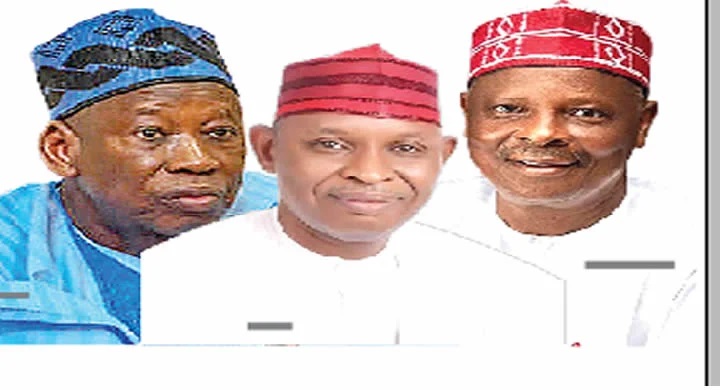
By Abba Dukawa
Kano politics has been thrown into fresh uncertainty following reports that the Kano State Governor, Abba Yusuf, is planning to defect from the New Nigeria Peoples Party (NNPP) to the All Progressives Congress (APC).
For years, Rabiu Musa Kwankwaso aspired to be Kano’s undisputed political kingmaker. He only succeeded in realizing this ambition by installing his perceived political godson as the current governor of Kano State.
His earlier attempts had failed; notably, the current governor is the only candidate Kwankwaso attempted to install twice.
Even before the recent attempt at reclaiming the political and power throne by its rightful owner, there were widespread insinuations that the relationship between the political godfather and godson was far from cordial, despite both camps publicly maintaining that all was well.
The governor’s recent move to cross over to the ruling party has been strongly opposed by the state party leadership and the NNPP’s national leader, Senator Rabiu Musa Kwankwaso. This development has triggered internal disagreements within the NNPP, particularly between supporters of the governor and loyalists of the Kwankwasiyya movement.
Since news broke of Governor Abba’s intention to defect to the APC, claims have circulated that he was acting with Kwankwaso’s consent. Those who believed that Governor Abba planned to defect with Kwankwaso’s approval made a grave misjudgment.
This is not a coordinated plan; rather, it is a political conflict akin to that between a father and a son.
From a rational political standpoint, the situation reflects a deep and intense struggle—a clear attempt at reclaiming the throne between the Governor of Kano State and the leader of the Kwankwasiyya movement, Senator Rabi’u Musa Kwankwaso.
By all political indicators, the governor’s effort to reclaim the throne appears aimed at securing absolute control and liberating himself from total submission to the national leader of the Kwankwasiyya movement.
In response to the unfolding conflict, the NNPP national leader has intensified efforts to rally federal and state lawmakers, local government chairmen, and party structures to remain loyal to him. Kwankwaso’s reaction has been firm but defensive.
Kwankwaso, addressing them, reportedly stated that it was evident the governor was abandoning the NNPP for the APC and that any member wishing to follow him was free to do so. He reminded them that they won the election by divine grace alone, asking rhetorically: “Will the God who gave us power in 2023 not still be there in 2027?”
He has denied any involvement in defection plans and reaffirmed his loyalty to the NNPP and its ideology, warning supporters against what he described as “betrayal. However, events on the ground tell a different story, as several local government chairmen, along with state and federal lawmakers, appear to be gravitating toward the governor’s camp.
Ahead of his anticipated defection and in a bid to strengthen his political base, the governor has reportedly been working behind the scenes to secure the support of National Assembly members and NNPP members of the State House of Assembly and the local government council chairman.
Although no official statement has been issued by the governor’s office since reports of the planned defection emerged, the body language of prominent government officials suggests that the plan is already in motion and that it is only a matter of time. So far, only the Speaker of the State Assembly, Yusuf Falgore, has publicly endorsed the governor’s planned defection. Sources also indicate that a significant number of local government chairmen have joined the governor’s defection train.
Blind Kwankwasiyya members ideologues fail to distinguish between political betrayal and the pursuit of independence. Politics, after all, is about survival and adaptation.
Most Kwankwasiyya members are youths. Where were they when Kwankwaso parted ways with Hamisu Musa, Musa Gwadabe, and Dauda Dangalan? Kwankwaso rose under mentorship before charting his own course. Where were they when Abubakar Rimi broke away from Aminu Kano in ’79-’80, pursuing his own path? When Abdullahi Ganduje split from Kwankwaso, he faced ridicule and insults.
These same critics should appreciate Abba Gida-Gida’s restraint in not publicly recounting the unpleasant experiences surrounding his emergence as governor under the NNPP.
The Kwankwaso–Abba conflict is, at its core, politics in its truest form—a search for solutions and self-determination. There is a clear distinction between betrayal in politics, the pursuit of solutions, and the quest for independence from total submission.
If Governor Abba succeeds in taking the bulk of NNPP’s structure to APC, it’ll be a major symbolic blow to Kwankwaso’s influence . It seems Kwankwaso’s biggest fear is Abba taking the state with him, leaving him with a movement without a state .
The plan Abba defection from the New Nigeria Peoples Party (NNPP) to the All Progressives Congress (APC) could reshape Kano’s politics significantly- APC regains dominance in Kano, strengthening its position ahead of 2027- NNPP’s national relevance takes a hit, struggling to recover from losing its only governor Kwankwasiyya faces a tough test without state power, potentially losing influence. New alliances might emerge as Yusuf’s move triggers political recalibrations across the North.
Game of Power: Throne Reclaim
Dukawa writes from Kano and can been reached via [email protected]
Feature/OPED
How Nigeria’s New Tax Law Could Redefine Risk in the Banking Sector
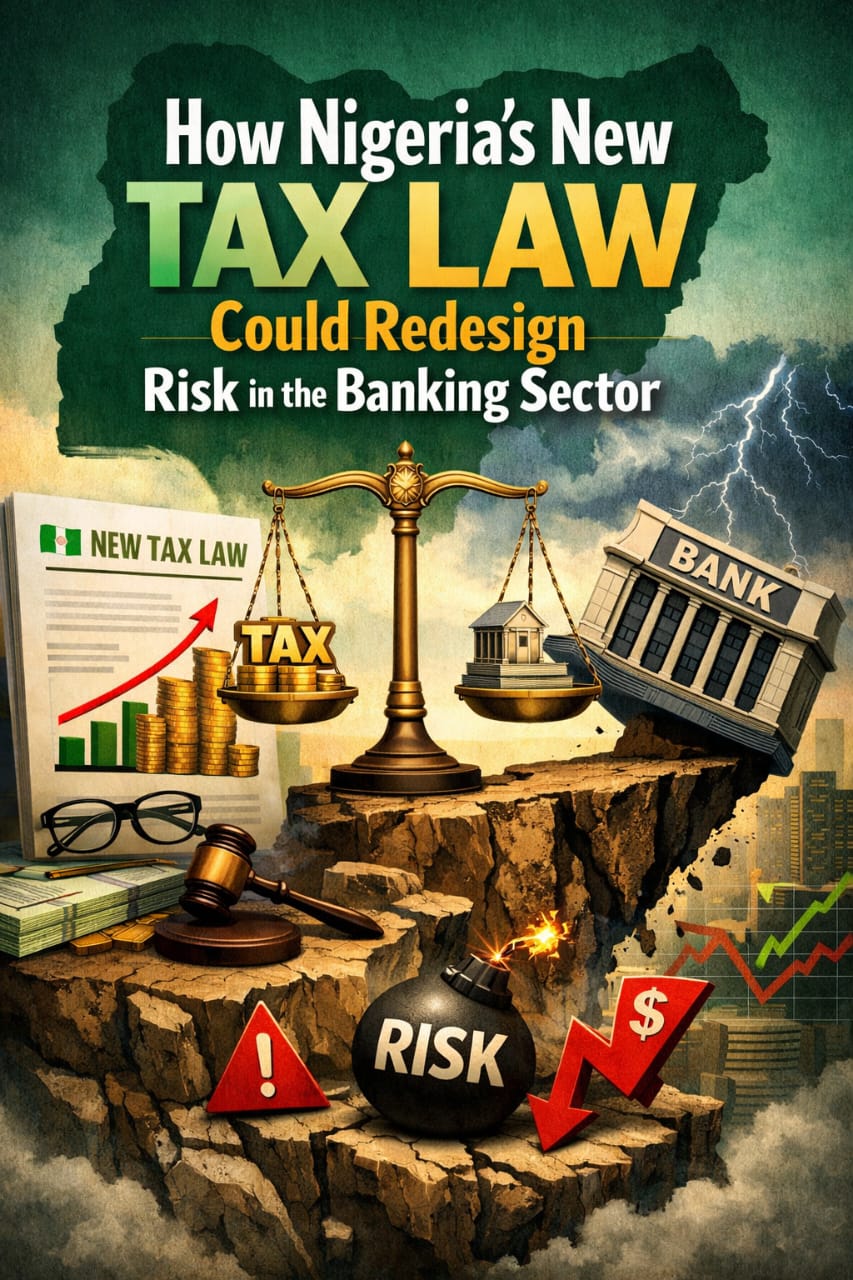
By Blaise Udunze
Nigeria’s new tax identification portal goes live nationwide tomorrow, Friday, January 1, 2026, marking a pivotal moment in the country’s fiscal and financial governance. Designed to modernise tax administration and strengthen taxpayer identification, the reform reflects a decisive shift in economic strategy by a government grappling with shrinking oil revenues, rising public debt, and widening fiscal deficits.
At the centre of this shift is a deeper integration of identity systems, banking data, and tax administration, most notably the adoption of the National Identification Number (NIN) as a tax identification mechanism for operating bank accounts. In parallel, banks will also begin charging a N50 stamp duty on electronic transfers of N10,000 and above, following the implementation of the Tax Act.
Individually, these measures may appear modest, even reasonable. Collectively, however, they signal a fundamental reordering of the relationship between the state, banks, and citizens with far-reaching implications for banking business, customer trust, financial inclusion, and credit creation.
Banks at the Centre of Fiscal Enforcement
Under the new tax framework, Nigerian banks are no longer merely financial intermediaries or corporate taxpayers. They are increasingly positioned as collection agents, reporting hubs, and frontline enforcement points for government revenue policy.
The linkage of NIN to tax compliance, combined with transaction-based stamp duties, reinforces a stark reality that the banking system has become the most visible and accessible channel through which the state now extracts revenue from citizens.
This expanded role exposes banks to a new layer of risk not just financial or operational, but social, reputational, and political risks that extend far beyond balance sheets.
A Structural Shift in the Banking, Tax Relationship
Historically, banks played a facilitative role in tax compliance, primarily through payment processing and remittance support. The use of NIN as a tax identifier marks a structural departure from this model.
Bank accounts are no longer merely financial tools; they are becoming gateways to tax visibility.
This shift fundamentally alters the risk profile of the banking business. Banks are now exposed not only to credit, market, and operational risks, but also to heightened social backlash, reputational damage, and political sensitivity, arising from their expanded enforcement role.
Account Friction and Slower Customer Onboarding
One of the earliest and most visible consequences of NIN-based tax identification is increased friction in account opening and maintenance.
Consequently, in a real sense, millions of Nigerians will continue to face challenges with the NIN system, including delays in enrolment and correction, biometric mismatches as well as inconsistencies between NIN, BVN, and bank records.
For banks, this translates into slower onboarding processes, higher rates of account restriction or rejection, and increased congestion across branches and digital platforms.
What should be a growth engine for deposit mobilisation instead becomes a bottleneck, resulting in lost customers, fewer transactions, and weakened scale advantages in an increasingly competitive banking environment.
Banks as the Face of an Unpopular Tax Regime
Perhaps the most underappreciated consequence of the new tax regime is the escalation of customer hostility toward banks.
When accounts are flagged, restricted, or subjected to enhanced scrutiny, customers rarely direct their frustration at tax authorities or policymakers. Instead, they confront the most visible institution in the chain, their bank.
Banks are increasingly blamed for account freezes, accused of colluding with government, and perceived as punitive rather than service-oriented institutions. This hostility is particularly pronounced among informal sector operators, small traders, artisans, and self-employed professionals with irregular income streams.
In a low-trust economy such as Nigeria’s, perception often outweighs regulation. Banks risk becoming the public face of coercive taxation, absorbing reputational damage for policies they neither designed nor control.
Erosion of Trust in the Banking Relationship
Banking fundamentally depends on trust that deposits are safe, transactions are private, and institutions act in customers’ best interests.
When NIN becomes a tax enforcement gateway, that trust begins to fray. Banks are no longer seen primarily as custodians of savings, enablers of enterprise, or neutral financial intermediaries. Instead, they are increasingly perceived as extensions of tax authorities, surveillance nodes, and compliance police.
Once trust erodes, customer behaviour adjust often in ways that undermine the formal financial system itself.
The Hidden Impact of the N50 Stamp Duty
The introduction of a N50 stamp duty on electronic transfers of N10,000 and above may appear trivial. In practice, it carries outsized implications.
For many Nigerians, especially low- and middle-income earners, electronic transfers are not discretionary transactions. They are salary payments, family support remittances, SME operating expenses, and routine commercial settlements.
Customers rarely distinguish between government levies and bank charges. The stamp duty will therefore be perceived as yet another bank fee, deepening resentment toward institutions already accused of excessive charges.
Behaviourally, customers may respond by breaking transactions into smaller amounts, increasing cash usage, or migrating to informal transfer channels, distorting transaction patterns and weakening the efficiency of the digital payments ecosystem.
Although banks merely collect the duty on behalf of the government, they will once again bear the reputational cost.
Threat to Deposit Mobilisation and Liquidity
Fear of tax exposure is a powerful behavioural driver. As NIN becomes closely associated with tax scrutiny and transaction charges mount, many customers are likely to reduce account balances, avoid lump-sum deposits, split transactions to stay below thresholds, or move funds outside the banking system entirely.
For banks, the consequences are clear, as these will result in slower deposit growth, volatile liquidity positions, and reduced capacity to fund loans.
Deposit mobilisation is the lifeblood of banking. Any policy that discourages formal savings weakens banks’ intermediation role and, by extension, the broader economy.
Reversal of Financial Inclusion Gains
Nigeria has invested more than a decade in expanding financial inclusion through agent banking, digital wallets, and tiered KYC frameworks. The use of NIN as a tax trigger threatens to reverse these gains.
Many newly banked individuals, particularly those at the base of the economic pyramid, may abandon formal accounts, revert to cash-based transactions, or rely on informal savings mechanisms.
The irony is stark as an identifier designed to formalise the economy may inadvertently push activity back into informality.
Rising Compliance, Legal, and Technology Costs
Operationally, integrating NIN as a tax identifier significantly increases banks’ compliance burden. However, institutions are expected to synchronise multiple databases, resolve inconsistencies at scale, implement continuous monitoring systems while also managing customer disputes arising from mismatches or wrongful flags.
The challenges inherent in these demands require heavy investment in IT infrastructure, expanded compliance teams and enhanced cybersecurity. The costs either erode profitability or are passed on to customers, further fuelling public resentment.
Credit Creation and Economic Growth at Risk
Reduced deposits, higher compliance costs, reputational strain, and customer attrition converge on a single outcome that mainly constrained lending capacity.
There is no two ways about this, banks under sustained pressure will tighten credit standards, reduce SME and consumer lending, and favour low-risk government securities. The ripple effects include slower job creation, constrained entrepreneurship, and, on a dangerous level, it leads to weaker economic growth, ultimately undermining the very revenue base the tax reform seeks to expand.
Revenue Without Ruin
No doubt, linking NIN to tax identification and expanding transaction-based levies may enhance government visibility over economic activity, but in reality they carry significant unintended consequences for banking business.
They risk weakening customer trust, undermining deposit mobilisation, reversing financial inclusion gains, increasing operational and reputational risks, and constraining credit growth.
Banks do not oppose taxation. What they caution against is turning financial inclusion infrastructure into a blunt instrument of tax enforcement without adequate safeguards.
For the policy to succeed without damaging the banking system, regulators must ensure clear thresholds and exemptions, strong data protection guarantees, phased implementation and ensure sustained public education to redirect hostility away from banks.
Ultimately, the critical question is not legislative readiness but execution, especially coordination across institutions, technological preparedness and the capacity to prevent unintended disruption to businesses and citizens alike. The authorities must understand that when revenue meets risk, wisdom lies in balance.
Blaise, a journalist and PR professional, writes from Lagos and can be reached via: [email protected]
-

 Feature/OPED6 years ago
Feature/OPED6 years agoDavos was Different this year
-
Travel/Tourism9 years ago
Lagos Seals Western Lodge Hotel In Ikorodu
-

 Showbiz3 years ago
Showbiz3 years agoEstranged Lover Releases Videos of Empress Njamah Bathing
-

 Banking8 years ago
Banking8 years agoSort Codes of GTBank Branches in Nigeria
-

 Economy3 years ago
Economy3 years agoSubsidy Removal: CNG at N130 Per Litre Cheaper Than Petrol—IPMAN
-

 Banking3 years ago
Banking3 years agoFirst Bank Announces Planned Downtime
-

 Banking3 years ago
Banking3 years agoSort Codes of UBA Branches in Nigeria
-

 Sports3 years ago
Sports3 years agoHighest Paid Nigerian Footballer – How Much Do Nigerian Footballers Earn









